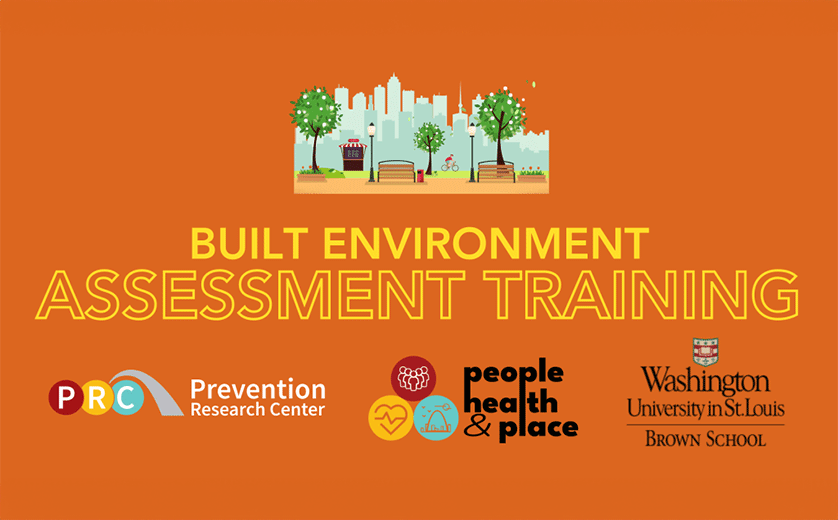A team at the Brown School is reviving and refreshing an online resource to determine how conducive a neighborhood or community is for walking, biking, and other physical activities. The instrument, the Built Environment Assessment Training (BEAT) program, is one of the first projects of the new People, Health & Place unit of the Prevention Research Center and is intended for training neighborhood organizations, non-profits, students and public health researchers on how to measure elements such as sidewalk quality and safe streets that contribute to healthy activities.
“There is a need for public health practice to improve training, especially in low-income communities and minority communities,” said Rodrigo Reis, professor at the Brown School and a leader of the effort. Originally developed nearly two decades ago at the University of Pennsylvania, BEAT was temporarily paused when the software used for its on-line platform was discontinued. New technology is now available that the Brown School team plans to include as the resources advance in the years ahead.

“The tools are different but the needs are still the same,” said Reis, who chairs the Urban Design specialization in the Masters in Public Health program. “There is a growing need for training in more cutting-edge technology,” he said, such as advanced versions of Google maps, artificial intelligence, and computational visioning. “We want to increase capacity building for research and practice, particularly in low- and middle-income countries.” Reis noted that the effort fits well with Washington University’s strategic focus on environmental research and justice.
Reis was a young researcher and part of the first BEAT training institute some 15 years ago. “It didn’t require a lot of technology, but it was very time-consuming,” he recalled.
Aine O’Connor, Research Manager for the People, Health & Place unit, said the new BEAT’s first phase focuses on training in the basic pencil-and-paper observation and recording of neighborhood information by users. “We can train people to observe the built environment,” she said. “You’re out there looking at street level, filling out checklists. That’s really a part of the experience because you have to put yourself in the shoes of someone who’s walking on the sidewalk, or looking for a grocery.” Those methods are especially useful for lower-income communities with limited access to the latest technology.
“We’re excited for everyone to be able to use this,” she added. “We see the audience as researchers working in the built environment and public health, but also user-friendly for neighborhood organizations to assess the qualities of their environments.” The results, she said, could be submitted to policymakers to help make neighborhoods healthier.
BEAT will continue to release content and upgrade its offerings. In its next phase it will be more interactive, with the ability add content to customize the tools and information, such assessments to measure the healthy-food environment in neighborhood stores and restaurants. In Phase 3, the team hopes to expand to offer training tailored for different neighborhoods around the world.
This free introductory course is designed to instruct researchers, students, planners, and health practitioners on ways to observe, plan, and evaluate changes to the built environment for health and well-being. Modules of the course offer tools and tricks for assessing streets, parks, trails, and neighborhood landscapes for physical activity.
A senior advisor to the project is Karen Glanz, George A. Weiss University Professor at the University of Pennsylvania, who led the team that created the original resource. The online trainings became popular with public-health instructors and students. But in 2022, Adobe discontinued the “Adobe Flash” platform, and the training course needed to be re-worked. Soon after, she heard from Reis, who wanted to take the training forward at Washington University.
“It’s great that this can continue,” she said. “I’ve always had a long commitment to trying to continue things that people find useful. It addresses a public health problem we haven’t solved: People without access to healthy food and physical activity.” In one Iowa county, she said, the food environment assessment tool (called NEMS) was used to assess the food environment and created a report it gave to restaurant owners, suggesting healthier food offerings. “Quite a few owners did it,” she said.
O’Connor said creating a new platform and transferring the trove of data from Penn onto it was challenging. There was no grant funding yet, so the effort relied on staff time to inventory Penn materials and get the project moving. They narrowed their initial phases to find the tools and content with the most evidence base and practical use. Then there was the task of transferring 4,687 digital files with information, photos, and other elements.
“It was definitely challenge,” she said, “But we were methodical and got it done.”
